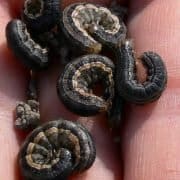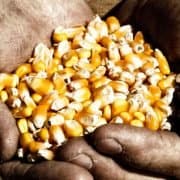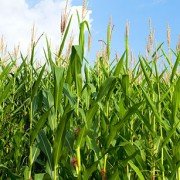Nitrogen stabilizers
Nitrogen management has always been a challenge in high nitrogen demand crops such as corn and winter wheat.
The three pathways that can contribute to significant nitrogen loss are:
- Volatilization (loss of ammonia nitrogen to the atmosphere from the soil surface),
- Denitrification (which occurs when soils are saturated and in an anaerobic environment) and
- Leaching (downward movement of nitrate nitrogen out of the rooting zone due to excessive rains)
The challenge has always been to make nitrogen available when the crop needs it and minimize the exposure of nitrogen to the weather scenarios that contribute to N loss. Consider the nitrogen response relationship for corn and winter wheat (below):
Corn nitrogen response curve
(Adapted from Richie, et.al, 2005, How a Corn Plant Develops).

We often apply nitrogen early in the season before the crop actually utilizes it. For example, the demand for nitrogen in corn is at its peak at about the V10 growth stage (often around early to mid-July). Split-applying nitrogen has been a reasonably effective way to reduce the risk of nitrogen loss, however, with added application costs.

Recently, nitrogen stabilizer products have been developed to slow down the conversion of applied nitrogen forms to ammonia and nitrate (forms of nitrogen that are volatile, can be denitrified and/or leachable). These products can be added to urea and 28% effectively and efficiently.
Benefits of nitrogen stabilizers
- Delays the conversion soil applied nitrogen to forms that increase the chance of volatilization, denitrification and leaching
- Increase plant available nitrogen longer into the growing season and closer to peak demand
- Relatively inexpensive “insurance” to protect your nitrogen investment
- A hedge against the unpredictable weather that causes nitrogen losses
Recently, Thompsons has been introduced to Nexus Ag nitrogen stabilizers that use specific amounts of DCD (Dicyandiamide) and NBPT (n-butyl thiophosphoric triamide) to achieve effective nitrogen stability.
Neon Surface
- 17% NBPT, 25% DCD
- Used where leaching and volatilization and denitrification are challenges
- Most effective in preplant and shallow incorporated situations
- Approximate cost is $10.00/acre for urea and $8.25/acre for 28% based on 100N
Neon Soil
- 5% NBPT, 30% DCD
- Used where leaching is the most significant challenge
- Most effective in deeper soil incorporation situations, like strip till banding
- Approximate cost is $11.00/acre for urea and $9.00/acre for 28% based on 100N
Neon Air
- 15% NBPT, 30% DCD
- Used where volatilization is the challenge
- Most effective in top dressing situations, drop pipping 28% into corn, 28%/urea top dress on winter wheat
- Approximately $6.00/acre using 28% and $7.25/acre using urea based on 100N









